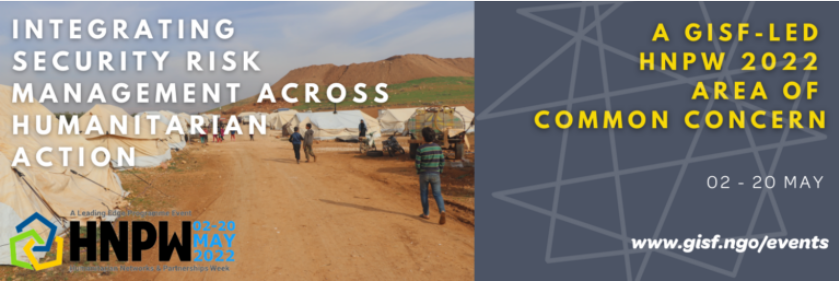This year’s Global Interagency Security Forum (GISF) posed interesting questions and offered innovative solutions aimed at anticipating what’s next in humanitarian action.
When a conflict erupts, the ICRC’s priority is to answer the needs of suffering civilians, which often means moving fast into stress, danger, and heightened emotion. Emergencies, it’s clear, don’t lend themselves to patient reflection.
In the struggle to respond more quickly and effectively, digital tools are increasingly useful for humanitarian actions such as registering people for food aid or medical care, assisting in locating missing loved ones, reaching out digitally for global inclusion, or developing experiential training programs.
The ICRC was invited to this year’s GISF event to showcase some of our innovative approaches to humanitarian futures.
Responsible Design
“Conflict is a place where the consequences of small digital risks become more severe,” says ICRC Technology Advisor Fabrice Lauper says. “During an emergency, there is a tension between the need for new solutions on the one hand and the risk linked to digital tools on the other.”
The primary risk, he says, is around data protection and how to ensure that personal data collected by humanitarians is secured. Should it fall into the wrong hands, such as a hostile force, a database of phone numbers or identity documents can be repurposed as a hit list.
If humanitarians want to safeguard the people they serve, they cannot just snatch generic digital tools off the shelf as they race out the door towards a conflict.
This is why, in some cases, the ICRC must build its own bespoke tools. Commercial products often have data collection and centralization as a default but, Lauper says, the opposite should be true. “We have to make sure we are not collecting any data that we do not need.”
One answer is for humanitarians to provide useful information rather than gather personal data, something that the ICRC’s RedSafe digital platform already does. Another is to have risk reduction built into the design.
“We can avoid creating the risk, rather than trying to mitigate it later, by designing something that is more responsible,” says Lauper.
Lauper gives the example of the Nexus Environmental Assessment Tool (Neat+), a multi-stakeholder project maintained by UNEP/OCHA aiming to improve the coordination between environmental and humanitarian actors. The tool does so by collecting data on displaced and host populations, the surroundings, and planned actions.
Lauper immediately saw the utility of such a tool but felt strongly that the ICRC must be able to manage the collected data itself, rather than rely on an external cloud service.
“I was expecting resistance,” he says of the Neat+ tool, “but they were already moving in that direction, towards allowing us to manage our own data.”
The increasing awareness of digital risk is welcome. Says Lauper, “there is a trend towards realizing that massive data aggregation is creating more risk than the limited value it brings.”
Gamification of Training
Another ICRC speaker at the GISF was Christian Rouffaer, Head of the Virtual Reality Unit at the ICRC, who spoke to participants about the challenges and opportunities of computer-generated training simulations and immersive VR, drawing on over a decade of experience in building these tools.
Gamification of security training allows people in disparate places to meet and collaborate online as avatars in a shared virtual space, where they can role play scenarios in an unscripted, improvisatory way closely reflecting real life situations.
“This is the best way to do gamification: simple technology, simple to implement, with a small learning curve,” says Rouffaer.
When the COVID-19 pandemic suddenly made it hard for people to meet in person, the simulations really came into their own, a marginal technology taking centerstage.
Immersive VR, with its headsets and world-creating capabilities, is impressive tech best suited to “very specific, technical training” such as forensics, or dealing with unexploded ordnance, says Rouffaer.
“I’m not a big supporter of immersive VR for mass training,” he adds, “because the heavy equipment requirements limit its reach, but I do believe VR training is perfect for a selection of highly technical or highly dangerous jobs.”
It is also a powerful outreach, advocacy and fundraising tool, permitting ICRC supporters a visceral understanding of what it means to work in a conflict zone. Virtual Reality as a behavior change tool is also conducive to experiential education.
The takeaway from both Lauper and Rouffaer was the need to innovate to be future-ready, whether for a world in which digital security and physical security are entwined, or one where movement is unexpectedly curtailed despite the necessity for operations to continue.
We may not be able to see the future, but if we can imagine it, we can prepare for it.

